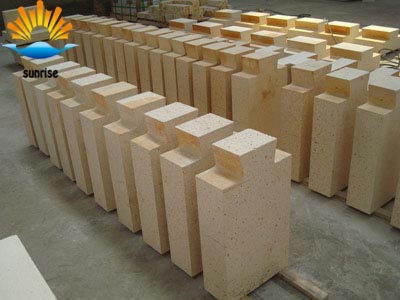 BackNews
BackNews
Do you know what is the most suitable type of fused brick for glass furnaces?
2019-11-07 16:17:46The so-called "electrofusion" refers to a manufacturing process of refractory bricks, in which the batch material is heated and melted in an electric arc furnace, and poured into a mold in a liquid state, and solidified to realize ceramic bonding. Compared with sintered brick, it has the characteristics of compact structure, low porosity, high bulk density, high mechanical strength and high-temperature structural strength, and strong resistance to glass liquid corrosion.
There are so many types of fused bricks, which one is more suitable for use in glass melting furnaces?
At present, the main varieties of the market are: electric melting mullite brick, fused zirconium corundum brick, fused chrome zirconium corundum brick, fused quartz brick, fused corundum brick and so on. Today we will focus on the following two fused bricks.
1, fused chrome zirconium corundum brick
10% 30% Cr2O3 was introduced into the AZS-33 brick, and the fused chrome zirconium corundum brick (abbreviated as AZCS brick, French grade ER2161) was produced by the non-shrinkage casting method. The skin and interior of the brick are dark green. The brick contains 4.5% shrinkage cavities and no connected pores. Due to the formation of aluminum chrome spinel solid solution, the viscosity of the glass phase is increased, and the resistance to glass liquid corrosion is greatly improved. It is 3.4 times that of fused AZS-33 brick and 2.6 times that of fused AZS-41 brick.

2, electric melting quartz brick
The production process of fused quartz bricks is the same as that of quartz glass. High-purity quartz sand (SiO2 content of 99.5% or more) was used as a raw material, and a small amount of Na20 was added as a mineralizer to be melted in a graphite resistance furnace (17501800 ° C). After melting, the whole melt is quickly taken out, rolled into bricks, cooled in air and then machined. The thermal expansion coefficient is extremely small and the thermal shock resistance is good. Boron-resistant glass liquid is highly aggressive, but not resistant to the corrosion of soda-lime-silica glass.
Through the above introduction, do you have a deeper introduction to several kinds of fused refractories commonly used in glass kiln? If you have other opinions and insights, please feel free to contact us for discussion. We look forward to growing with you!

